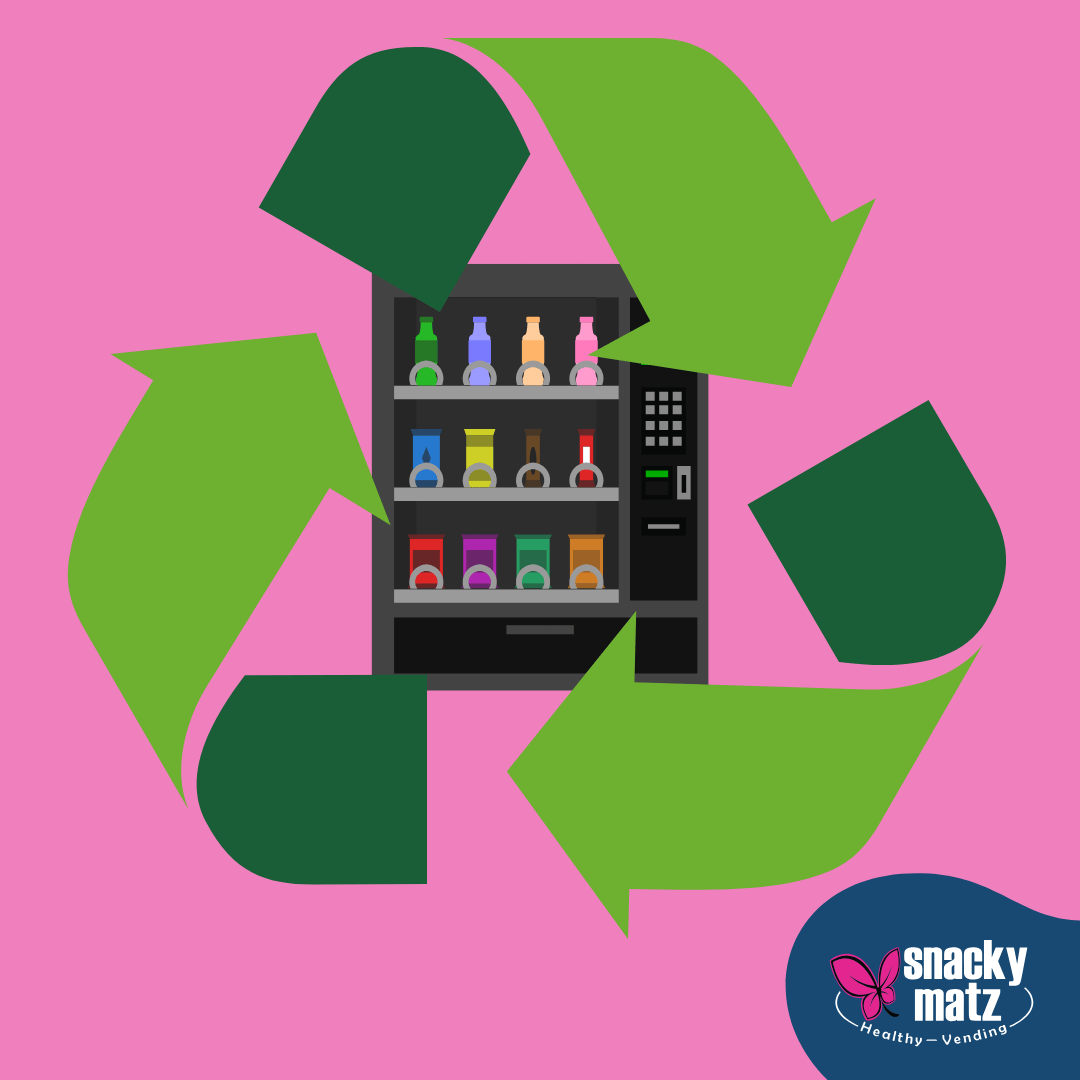
In an era where environmental sustainability is paramount, innovative solutions are emerging to tackle the pressing issue of waste management. One such solution gaining traction globally is the reverse vending machine (RVM). Unlike traditional vending machines that dispense products, RVMs accept used beverage containers — such as plastic bottles and aluminum cans — and reward users for recycling them. This incentivized approach not only encourages individuals to participate in recycling efforts but also contributes significantly to reducing litter and promoting a circular economy.
The concept of RVMs is not entirely new; however, recent technological advancements and growing environmental awareness have propelled their adoption in various parts of the world. For instance, in Ireland, the implementation of a deposit return scheme utilizing RVMs led to the return of over 630 million containers within eight months, marking a significant shift in consumer behavior towards recycling.
Businesses and communities are recognizing the multifaceted benefits of RVMs. Not only do they aid in achieving sustainability goals, but they also enhance brand image, foster customer loyalty, and can even serve as a source of revenue through the collection of recyclable materials. Moreover, the integration of advanced technologies like artificial intelligence (AI) and the Internet of Things (IoT) has made modern RVMs more efficient and user-friendly, further boosting their appeal.
As environmental concerns continue to mount, the adoption of reverse vending machines presents a practical and impactful strategy for businesses and communities alike to contribute to a more sustainable future.
What Are Reverse Vending Machines?
Reverse vending machines are automated systems designed to collect, sort, and process used beverage containers in exchange for a reward. Instead of dispensing snacks or drinks, RVMs do the opposite: they accept recyclables and provide compensation — such as coupons, cash refunds, or digital credits — to encourage environmentally responsible behavior.
These machines use barcode scanners, weight sensors, and shape recognition to verify and process items. Once validated, the item is compacted or stored, and the user receives a reward based on the item type or deposit scheme. The process is fast, intuitive, and satisfying, making it especially effective in high-traffic areas like supermarkets, universities, and transit stations.
RVMs are often integrated into deposit return schemes (DRS), where consumers pay a small fee when purchasing a beverage and get it back when they return the empty container. This model has proven highly successful in countries like Germany and Norway, where return rates exceed 90%. Learn more in this guide by RTS.
Leading companies like TOMRA provide cutting-edge reverse vending solutions that support a wide range of container types and integrate with digital apps and sustainability tracking systems — making them ideal for businesses committed to environmental responsibility.
Global Adoption and Success Stories
The global success of reverse vending machines is undeniable. Governments and corporations around the world are adopting RVMs as a key part of their sustainability strategies, delivering impressive results in waste reduction and public engagement.
Ireland: Early Success with Deposit Return Scheme
In 2024, Ireland launched its first nationwide Deposit Return Scheme (DRS) with RVMs installed in major supermarkets, universities, and public areas. In just eight months, the country saw over 630 million containers returned, with over 90% of consumers participating. This initiative marked a major shift in public behavior, proving that when systems are convenient and rewarding, adoption is swift.
Benefits for Businesses and Communities
Reverse vending machines offer more than just environmental impact — they present a strategic opportunity for businesses and communities to engage consumers, boost brand reputation, and meet sustainability goals in a practical, measurable way.
Strengthening Brand Image Through Sustainability
Modern consumers are increasingly making choices based on a brand’s commitment to environmental and social responsibility. By installing or partnering with reverse vending machines, companies can publicly demonstrate their role in the circular economy — reducing single-use waste while actively supporting recycling efforts. This aligns with growing ESG (Environmental, Social, and Governance) reporting demands and can significantly enhance trust and loyalty among eco-conscious customers.
In fact, according to a Nielsen report, 66% of global consumers are willing to pay more for sustainable brands — a number that jumps even higher among millennials and Gen Z.
Enhancing Customer Engagement and Foot Traffic
By offering tangible rewards — such as coupons, discounts, or store credit — RVMs provide a reason for customers to return, literally. This incentivized recycling model not only encourages sustainable habits but also increases customer retention and in-store engagement.
For retail stores, gyms, universities, and transit hubs, this means more frequent visits, longer dwell times, and positive brand association. Businesses can also gamify the experience, running seasonal promotions tied to recycling milestones, boosting participation while driving traffic.
Supporting Local Community Initiatives
Communities benefit from cleaner public spaces, lower landfill burden, and reduced municipal waste management costs. Schools, sports centers, and city parks can partner with RVM providers to launch educational programs that promote environmental awareness and action. Local governments may even offer incentives for businesses that adopt these systems, contributing to a collective effort toward zero waste.
Reverse vending machines also support donation-based reward models — allowing users to send their recycling refund directly to a local charity or community cause, which adds a layer of civic engagement and social value.
Technological Advancements in RVMs
Reverse vending machines have evolved far beyond simple collection bins. Today’s RVMs are engineered with cutting-edge technology that not only improves user experience but also transforms the way recycling is tracked, managed, and incentivized.
Smart Recognition and Multi-Material Processing
Modern RVMs are equipped with advanced image recognition, shape detection, and barcode scanning capabilities. This enables them to quickly and accurately identify eligible containers — even when labels are partially damaged or missing. Some machines now support multiple packaging types, including PET plastic, aluminum, glass bottles, and even cartons, expanding their usability in diverse retail and public settings.
App Integration and Digital Wallets
To improve consumer interaction, many RVM providers are linking machines with mobile apps and digital wallets. This enables users to track their activity, earn points, redeem rewards, or even donate their deposit to environmental causes — all from their smartphones.
In some countries, these systems are already integrated with contactless payment platforms like Apple Pay and Google Wallet, blurring the lines between recycling and commerce. Retailers can leverage this integration to issue personalized coupons or store credit, directly tied to recycling behavior.
Challenges and Considerations
Upfront Costs and Infrastructure
One of the most common barriers to adopting RVMs is the initial investment. High-quality reverse vending machines — especially those with smart recognition and IoT features — can be expensive to purchase and install. Costs can increase further when additional infrastructure is needed, such as secure power sources, internet connectivity, or integration with existing recycling systems.
For small businesses or community centers, this upfront cost may seem prohibitive. However, many manufacturers and providers offer leasing programs, sponsorship models, or government-backed subsidies to help offset these expenses and lower the entry barrier.
Maintenance and Vandalism Risks
As with any automated equipment placed in public or semi-public spaces, maintenance and security are ongoing concerns. RVMs can be subject to technical issues, such as jammed containers, sensor errors, or full storage bins — which can frustrate users if not addressed quickly. In outdoor or unsupervised areas, there’s also a risk of vandalism or misuse.
To mitigate this, businesses should consider machines with remote monitoring, rapid support services, and protective enclosures. Partnering with vendors that offer full-service maintenance plans can significantly reduce the operational burden.
Consumer Awareness and Behavior
Even with well-placed machines and strong incentives, consumer participation isn’t guaranteed. In regions where deposit return systems are new or unfamiliar, users may be uncertain about how to use the machines or which items are eligible. There may also be skepticism about the value of the rewards or the overall purpose of the system.
Launching a successful RVM program often requires clear signage, education campaigns, and well-communicated reward systems. Businesses can also benefit from staff training, mobile app guides, or QR code tutorials placed near the machine to increase engagement.
Policy and Compliance Complexity
In some countries or states, reverse vending machines are tied to formal deposit legislation or recycling mandates. Businesses must ensure compliance with all local waste management regulations, including labeling, tax collection (on deposits), and proper sorting of returned materials.
Understanding and aligning with evolving regulations — especially in states like California or countries like Germany — is essential for long-term program viability. Businesses considering adoption should consult local environmental agencies or experienced RVM providers to avoid compliance gaps.
Conclusion
Reverse vending machines represent far more than a recycling innovation — they reflect a shift in how we engage with environmental responsibility in everyday spaces. From boosting recycling rates in train stations and supermarkets to helping businesses strengthen their sustainability efforts, RVMs are proving to be a scalable, impactful solution.
As the global push for a circular economy intensifies, these machines are aligning economic incentives with environmental action. Whether it’s returning a plastic bottle for mobile data in India or earning transit credits in Dubai, the user experience is intuitive, rewarding, and increasingly digital.
For businesses, adopting reverse vending systems is more than a gesture of goodwill. It’s a strategic decision — one that can improve brand perception, drive customer loyalty, support ESG compliance, and contribute to cleaner communities. And with the support of smart technology, predictive analytics, and real-time monitoring, these machines can be seamlessly integrated into everyday operations.
The challenges — from infrastructure costs to behavioral shifts — are real. But so are the rewards. Companies that invest in responsible, consumer-centric recycling solutions today are positioning themselves as leaders in the sustainable marketplaces of tomorrow.


